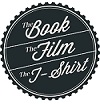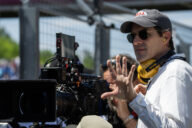In 2010 a movie hit the big screen that completely stunned all genre film lovers, especially those who loved a good monster film. See normally a monster film takes years to make, $100s millions of dollars to make and has an established director such as James Cameron or Steven Spielberg attached. But then suddenly along came Monsters, a monster film shot on a measly $500,000 budget and directed by a relative unknown in the directing world, Gareth Edwards.
Monsters went on to be described by many film critics as ‘one of the finest monster films ever made’ and is a film still talked about at every pop culture festival you attend even today. Not surprisingly over the past four years fans have been begging for a sequel to be made, but it has looked more and more unlikely as Monsters star Scoot McNairy has become hot Hollywood property appearing in Oscar winning films like 12 Years A Slave and Argo, while director Gareth Edwards moved onto making blockbusters like Godzilla and is currently filming Star Wars: Rogue One.
Well fans of Monsters can finally start celebrating because Monsters: Dark Continent has now arrived. The film is set ten years after the original Monsters and now sees the ‘Infected Zones’ spread right across the world. The film this time features an all new cast including Joe Dempsie (Games Of Thrones) and Johnny Harris (Snow White & The Huntsmen) and sees McNairy return in the form of an executive producer.
Seeing Gareth Edwards was also tied up with his production schedule on Godzilla he also takes on an executive producer role and has appointed first time feature director Tom Green, mostly known for directing cult television show Misfits, to the role of director.
Realising he had big shoes to fill Green says he set about keeping Monsters: Dark Continent similar to the original film but also putting in his own stamp on the film. “The ideology is that it is a sequence in terms of ethos,” says Green. “I think after viewing the first film what blew me away was how inventive it was and how ambitious it was and how much scale you can put into your film if you just think creatively and limitlessly. So I wanted to keep that ethos but also to create a completely different film entirely.
“I think something that was really important was that it had a stronger backbone of genre through it and the obvious jumping off point for me was war films, so that was very much where I made my film go so I was suppose it was different in that it had a stronger driving genre through it, so I think what was different about the first one is that it doesn’t have a classical narrative structure – a conventional three act structure I think it is a very different piece and it meanders its way through… well not meanders but finds its path and journey through the character journeys rather than a very structured narrative. I guess that is a bit of a similarity, so what is different again is that the monster is up front and centre, but equally there is a cross over with the first one in that it is driven by a human story.”
Of course if you sit down and talk to any fan of monster films they will tell you there is something just as important as good acting, brilliant directing and a suspenseful story when it comes to the genre – and that is how do the monsters look. So how much work did Green and his team put into the creatures in Monsters: Dark Continent? “Well I wanted to create my own world of creatures and I wanted there to be different species of them, and if not different species then different varieties of the same specie, and that they may have adapted virally,” explain Green.
“And there’s the idea that their evolutionary process took years rather than millions of years so they had formed hard shells very quickly because they had found themselves in a different environment. These originally squid like creatures suddenly found themselves in the Middle East, the harsher environment and in harsher and sandier conditions so their evolutionary process had built them hard shells, armour around them and they also adapted to their environment in other ways as well so that was the jumping off point. I also wanted them to have grown in size and be bigger and for them to move in herds. I liked the idea of mirroring the natural world with the creatures and I wanted them to be really organic so it felt like that they belonged in their environment.”
“So myself and Chris Bull, the creature designer sat down with that, and with Seb’s input as well, and we started designing and what was wonderful about working with Christian was the way he sculpts you know with digital clay, and I’ve done sculpture myself so I love watching him do it., but I am strictly an amateur and he is this masterful sculptor and in physical clay as well as digital clay. And he would pull and find these shapes and do all these sketches and we would kind of just keep working off and from those shapes and I wanted them to have some kind of organic, some kind of tree root-like system. So he would keep working on these designs and I would sit with him and then leave him and then he would show me new designs and I would give him input on those designs. But then Seb and myself in the Middle East were inspired by the rock faces, the deserts there and the textures of the rock and the environment there and we took hundreds and thousands of photographs, so the textures there became part of the texture maps of the creatures that you see in the film.”
Monsters: Dark Continent is out now through Madman Films



















No Comments